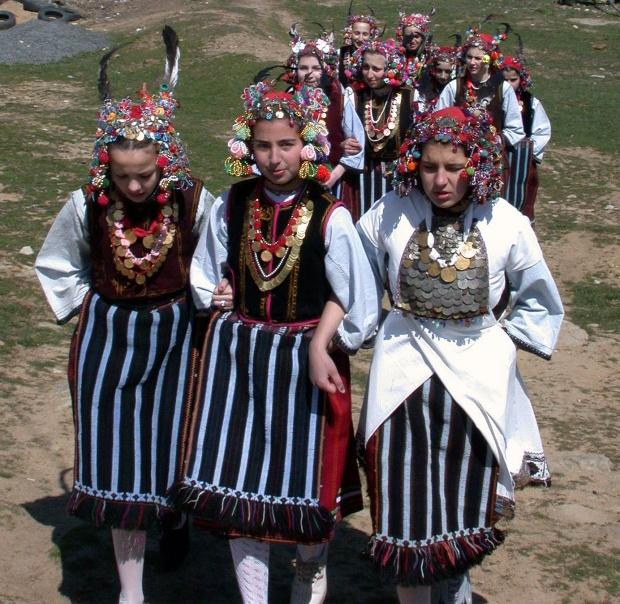St. Lazarus Feast (Lazarovden in Bulgarian) is one of the moveable feasts, because its date is set according to the date of Easter every single year, and is celebrated on the Saturday before Palm Sunday. In the gospels this is the day of the Raising of Lazarus, one of the miracles performed by Jesus Christ.
 In the Bulgarian popular tradition the feast of Lazaritsa, Lazarnitsa ot Lazarus Saturday is a stage in the transition from winter to spring, and also from death to life. In the Bulgarian mythology Lazarus is the lord of woods and bushes. He carries an axe and clears woods to make farming fields for peasants. He comes to bring a new beginning for nature and his gift for girls is marriage.
In the Bulgarian popular tradition the feast of Lazaritsa, Lazarnitsa ot Lazarus Saturday is a stage in the transition from winter to spring, and also from death to life. In the Bulgarian mythology Lazarus is the lord of woods and bushes. He carries an axe and clears woods to make farming fields for peasants. He comes to bring a new beginning for nature and his gift for girls is marriage.
This is the day of initiation of girls in pre-marriage age. With their heads decorated with green leaves, flowers and bird feathers aimed to bring luck, they tour the houses of the village and dance their Lazarus dances. In the traditional code, a girl who failed to take part in Lazarus girls' celebrations will never get married. It could be that a mountain dragon would come and take her away to marry her.
The ritual songs of Lazarki (girls who join Lazarus Saturday rituals) convey best wishes for health and fertility; they bless farmers, young girls and boys, young men, women and babies. The ritual tour of the village is meant to create a spirit of joy, celebration, luck and fertility in the community. Housewives would give white eggs and coins to girls. The eggs will later be painted for Easter. Drawing up a symbolic circle, Lazarki always return to the point where they have started. In the popular tradition the circle was ascribed with a powerful protective function.
English Daniela Konstantinova
Eight authentic Bulgarian traditions and skills, passed down through generations, have been added to the National Representative List of Bulgarian Intangible Cultural Heritage of Humanity, becoming part of Bulgaria's Living Human Treasures. "This..
Halva, this sweet temptation with an oriental twist, is a welcome delicacy on the Bulgarian table, especially on holidays. Judging by the descriptions of Western travellers, halva was a common dessert in Bulgarian lands as early as the 16th century. The..
The Youth Centre "Zahari Stoyanov" in the town of Dobrich, Northeastern Bulgaria, is organizing a folklore meeting of communities on the occasion of the International Day of Tolerance. The aim of the event, which will take place from today to 17..
The Philip Koutev National School of Folk Arts is not just any school - it is a talent laboratory. It is the first school not only in Bulgaria but in..

+359 2 9336 661
